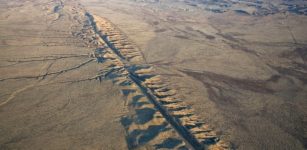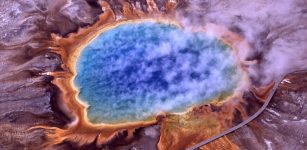Sahara Can Be Green Again Thanks To New Wind And Solar Technology
Eddie Gonzales Jr. – MessageToEagle.com – Imagine a green Sahara where plants grow and rain falls. This was once the case in the distant past, when the Sahara Desert had a grassland ecosystem and was a much wetter place than it is today. Then, something happened, and the region became a barren land, with minimal water or life and scorching temperatures. What changed the green Sahara into a desert is still uncertain.
Most scientists believe the Sahara dried up due to a change in the Earth’s orbit, which affects solar insolation, or the amount of electromagnetic energy the Earth receives from the Sun.
Now, scientists say we can use massive wind and solar technology and increase vegetation in the desert by about 20 percent.
This can be done by building huge wind and solar farms across the desert. Such installations can not only provide an impressive amount of power to Europe, Africa, and the Middle East, but also alter the climate increasing heat, precipitation and vegetation in areas that could sorely use the added greenery.
“Previous modeling studies have shown that large-scale wind and solar farms can produce significant climate change at continental scales. But the lack of vegetation feedbacks could make the modeled climate impacts very different from their actual behavior,” said lead author Yan Li, a postdoctoral researcher in natural resources and environmental sciences at the University of Illinois.
The new study, co-led with researchers at the University of Maryland, focused on the Sahara for several reasons, Li said in a press statement.
“We chose it because it is the largest desert in the world; it is sparsely inhabited; it is highly sensitive to land changes; and it is in Africa and close to Europe and the Middle East, all of which have large and growing energy demands,” he said.
The wind and solar farms simulated in the study would cover more than 9 million square kilometers and generate, on average, about 3 terawatts and 79 terawatts of electrical power, respectively.
“In 2017, the global energy demand was only 18 terawatts, so this is obviously much more energy than is currently needed worldwide,” Li said.
The model revealed that wind farms caused regional warming of near-surface air temperature, with greater changes in minimum temperatures than maximum temperatures.
“The greater nighttime warming takes place because wind turbines can enhance the vertical mixing and bring down warmer air from above,” the authors wrote.
Precipitation also increased as much as 0.25 millimeters per day on average in regions with wind farm installations.
“This was a doubling of precipitation over that seen in the control experiments,” Li said.
In the Sahel, average rainfall increased 1.12 millimeters per day where wind farms were present.
“This increase in precipitation, in turn, leads to an increase in vegetation cover, creating a positive feedback loop,” Li said.
See also:
Dust Storms Shed New Light On Why A Once Green Sahara Turned Into A Desert
Ancient Rivers That Existed 100,000 Years Ago Created ‘Green Corridors’ Across Sahara
Sahara Desert Is Continuously Expanding – New Study Clearly Shows
Solar farms had a similar positive effect on temperature and precipitation, the team found. Unlike the wind farms, the solar arrays had very little effect on wind speed.
“We found that the large-scale installation of solar and wind farms can bring more rainfall and promote vegetation growth in these regions,” Kalnay said. “The rainfall increase is a consequence of complex land-atmosphere interactions that occur because solar panels and wind turbines create rougher and darker land surfaces.
Scientists point out there are many benefits with this technology.
“The increase in rainfall and vegetation, combined with clean electricity as a result of solar and wind energy, could help agriculture, economic development and social well-being in the Sahara, Sahel, Middle East and other nearby regions,” Safa Motesharrei at the University of Maryland said.
Written by Eddie Gonzales Jr. – MessageToEagle.com Staff Writer











